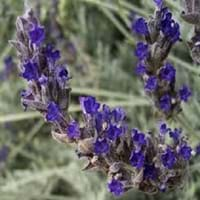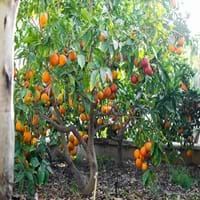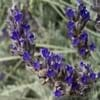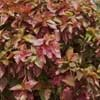Life Span
Perennial
Perennial
Type
Tender Perennial
Fruit
Origin
Mediterranean
Southeastern Asia, China
Types
Lodden Blue, Royal Velve, Melissa, Sachet, Sharon Roberts etc
Tarocco, Sanguinello,
Moro
Number of Varieties
Not Available
Habitat
Grassland, Hillside, Rocky areas
Sunny Edge, Woodland Garden
USDA Hardiness Zone
8-10
9-11
Sunset Zone
4, 5, 6, 7, 8, 9, 10, 11, 12, 13, 14, 15, 16, 17, 18, 19, 20, 21, 22, 23, 24
H1, H2, 8, 9, 12, 13, 14, 15, 16, 17, 18, 19, 20, 21, 22, 23, 24
Habit
Clump-Forming
Oval or Rounded
Flower Color
Blue Violet
White
Flower Color Modifier
Not Available
Bicolor
Fruit Color
Brown
Orange, Orange Red
Leaf Color in Spring
Sea Green, Gray Green
Dark Green
Leaf Color in Summer
Sea Green, Gray Green
Dark Green
Leaf Color in Fall
Sea Green, Gray Green
Dark Green
Leaf Color in Winter
Gray, Silver
Light Green
Plant Season
Spring, Summer, Fall, Winter
Spring, Summer, Fall, Winter
Sunlight
Full Sun, Partial Sun
Full Sun
Type of Soil
Clay, Loam, Sand
Loam
The pH of Soil
Neutral, Alkaline
Acidic, Neutral
Soil Drainage
Well drained
Well drained
Bloom Time
Indeterminate
Spring, Late Winter, Indeterminate
Tolerances
Drought, Salt
Drought
Where to Plant?
Ground
Ground
How to Plant?
Seedlings, Stem Planting, Transplanting
Seedlings, Semi-ripe cuttings
Plant Maintenance
Medium
Medium
Watering Requirements
Does not require lot of watering, Over-watering can cause leaf problems or root diseases, Water when soil is dry
Do Not over Water, Keep the ground moist but not water-logged, Needs watering once a week
In Summer
Lots of watering
Lots of watering
In Spring
Moderate
Moderate
In Winter
Average Water
Average Water
Soil pH
Neutral, Alkaline
Acidic, Neutral
Soil Type
Clay, Loam, Sand
Loam
Soil Drainage Capacity
Well drained
Well drained
Sun Exposure
Full Sun, Partial Sun
Full Sun
Pruning
Do not prune during shooting season, Prune after flowering, Prune if you want to improve plant shape, Prune in late summer or fall, Prune in spring, Prune to control growth
Pinch Tips, Remove branches, Remove damaged fruit, Remove damaged leaves, Remove dead branches, Remove dead leaves
Fertilizers
All-Purpose Liquid Fertilizer
All-Purpose Liquid Fertilizer, organic fertlizers
Pests and Diseases
Armillaria mellea, Cecidomia, Cuscuta, Gray mold, Meligetes, Phoma, Rhizoctonia Root Rot, Sophronia Humerella
Red blotch
Plant Tolerance
Drought
Drought
Flower Petal Number
Single
Single
Fragrant Bark/Stem
Yes
No
Foliage Texture
Fine
Medium
Foliage Sheen
Matte
Glossy
Attracts
Butterflies
Birds, Butterflies
Allergy
Diarrhea, Headache, Itchy eyes, Nausea, Vomiting
Pollen
Aesthetic Uses
Beautification, Bouquets, Showy Purposes, Used for decorating walls, fences, gates, hedges, etc.
Not Used For Aesthetic Purpose
Beauty Benefits
Not Available
Good for skin
Environmental Uses
Air purification
Air purification, Indoor Air Purification
Medicinal Uses
Acne, Skin irritation
Appetizer, Blood purifier, Carminative, Miscellany, Tonic
Part of Plant Used
Flowers
Flowers, Fruits
Other Uses
Oil is used for aromatherapy, Oil is used in perfume, soaps, creams, etc., Showy Purposes, Used As Food, Used as Ornamental plant, Used for fragrance
Used as essential oil
Used As Indoor Plant
No
Yes
Used As Outdoor Plant
Yes
Yes
Garden Design
Container, Herb / Vegetable, Mixed Border, Rock Garden / Wall
Container, Edible, Feature Plant, Fruit / Fruit Tree, Hedges, Mixed Border, Screening / Wind Break, Topiary / Bonsai / Espalier, Tropical
Botanical Name
LAVANDULA ginginsii
CITRUS sinensis
Common Name
Lavender
Blood Orange, Naval Orange, Orange, Sweet Orange
In Hindi
Lavender
Blood Orange Tree
In German
Lavendel
Blut- Orange Tree
In French
Lavande
Sang Orange Tree
In Spanish
Lavanda
Árbol de la naranja de sangre
In Greek
λεβάντα
Blood Orange Tree
In Portuguese
Lavanda
Orange Tree sangue
In Polish
Lawenda
Krew Orange Tree
In Latin
Lavendula
Sanguinem Aliquam ligno
Phylum
Tracheophyta
Magnoliophyta
Class
Magnoliopsida
Magnoliopsida
Order
Lamiales
Sapindales
Family
Lamiaceae
Rutaceae
Clade
Angiosperms, Asterids, Eudicots
Angiosperms, Eudicots, Rosids
Tribe
Lavanduleae
Citreae
Subfamily
Nepetoideae
Aurantioideae
Number of Species
Not Available
Season and Care of Goodwin Creek Grey and Blood Orange
Season and care of Goodwin Creek Grey and Blood Orange is important to know. While considering everything about Goodwin Creek Grey and Blood Orange Care, growing season is an essential factor. Goodwin Creek Grey season is Spring, Summer, Fall and Winter and Blood Orange season is Spring, Summer, Fall and Winter. The type of soil for Goodwin Creek Grey is Clay, Loam, Sand and for Blood Orange is Loam while the PH of soil for Goodwin Creek Grey is Neutral, Alkaline and for Blood Orange is Acidic, Neutral.
Goodwin Creek Grey and Blood Orange Physical Information
Goodwin Creek Grey and Blood Orange physical information is very important for comparison. Goodwin Creek Grey height is 45.70 cm and width 30.50 cm whereas Blood Orange height is 457.20 cm and width 365.76 cm. The color specification of Goodwin Creek Grey and Blood Orange are as follows:
Goodwin Creek Grey flower color: Blue Violet
Goodwin Creek Grey leaf color: Sea Green and Gray Green
Blood Orange flower color: White
- Blood Orange leaf color: Dark Green
Care of Goodwin Creek Grey and Blood Orange
Care of Goodwin Creek Grey and Blood Orange include pruning, fertilizers, watering etc. Goodwin Creek Grey pruning is done Do not prune during shooting season, Prune after flowering, Prune if you want to improve plant shape, Prune in late summer or fall, Prune in spring and Prune to control growth and Blood Orange pruning is done Pinch Tips, Remove branches, Remove damaged fruit, Remove damaged leaves, Remove dead branches and Remove dead leaves. In summer Goodwin Creek Grey needs Lots of watering and in winter, it needs Average Water. Whereas, in summer Blood Orange needs Lots of watering and in winter, it needs Average Water.





